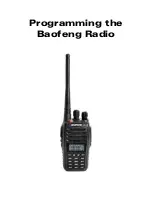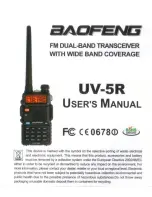
Intermediate
Power
Amplifier
30C1892G1
‐
G2
‐
G3:
Figures
1,
2,
and
7.
The
30C1892
Intermediate
Power
Amplifier
basically
consists
of
a
fan
‐
cooled
heatsink
and
three
circuit
boards.
These
boards
are
the
Preamplifier
board,
the
Amplifier
Input
board,
and
the
Amplifier
Output
board.
This
subassembly
is
equipped
with
shielding
covers
and
is
mounted
on
a
standard
19"
panel.
Figure
1
shows
the
basic
construction
of
the
IPA
assembly,
although
the
drawing
was
originally
made
for
a
system
using
an
additional
AGC
module
shown
as
item
50
on
the
drawing.
AGC
in
the
TTS1000B
transmitter
is
implemented
in
the
exciter
instead,
so
item
50
is
not
used
and
non
‐
existent
in
the
present
system.
A
directional
coupler
(shown
in
Figure
12)
is
also
mounted
on
the
panel
and
provides
a
metering
DC
signal
corresponding
to
the
output
RF
from
the
Intermediate
Power
Amplifier.
Figures
2
and
7
for
Low
Band
and
High
Band
respectively,
illustrate
the
arrangement
of
boards
on
the
amplifier
heatsink.
Drawing
30C1474
is
for
our
250
watt
RF
power
amplifier,
derated
for
IPA
service.
Cooling
for
the
IPA
heatsink
is
provided
by
a
small
(approx
100
cfm)
axial
flow
Rotron
™
fan
which
is
mounted
on
a
bracket
situated
so
that
the
fan
blows
air
on
the
finned
portion
of
the
heatsink.
RF
Preamplifier
10A1453G2
(Low
Band)
and
10A1453G3
(High
Band):
Figures
3
and
8.
This
preamplifier
design
originally
was
used
in
the
two
IPAs
of
the
aural/sound
section
of
a
dual
RF
chain
transmitter
which
operates
two
single
RF
chains
in
quadrature
and
therefore
requires
phase
and
gain
control
of
the
input
to
each
chain.
It
therefore
has
components
in
place
for
adjustment
of
RF
gain
and
phase
to
enable
setting
up
these
paralleled
transmitters.
In
a
single
chain
transmitter
such
as
the
TTS1000B,
no
requirement
exists
for
control
of
RF
phase
nor
consequently
its
components,
but
our
design
standardization
results
in
lower
overall
expense
being
incurred
by
simply
leaving
the
components
on
the
PC
board.
The
following
discussion
deals
with
the
phasing
components
because
they
are
a
part
of
the
signal
path
through
the
preamplifier,
but
functionally
they
are
inconsequential
except
for
technical
interest.
The
RF
input
signal
from
the
exciter
is
fed
via
J1
into
a
quadrature
hybrid
U1
configured
as
a
phase
shifter,
which
is
able
to
produce
a
phase
shift
in
excess
of
90
°
between
its
pin
1
(input)
and
pin
6
(output).
A
valuable
property
of
a
quadrature
hybrid
network
connected
as
shown
in
Figures
3
and
8,
is
that
it
can
introduce
a
variable
phase
delay
that
depends
on
the
value
of
capacitance
at
its
0
°
and
90
°
ports.
These
ports
(U1
pins
2
and
5)
each
see
a
pair
of
variable
capacitance
diodes
CR1,
CR2
and
CR3,
CR4.
The
capacitance
of
these
diodes
depends
on
the
amount
of
reverse
bias
voltage
applied
to
them
from
the
arm
of
R2.
In
all
transmitters,
R2
is
adjustable
from
the
front
panel
and
is
marked
PHASE.
In
the
Low
Band
unit,
the
output
of
the
hybrid
is
then
fed
via
an
attenuator
R5
(marked
GAIN)
to
ampli
‐
fier
U2
which
is
output
to
terminal
J2.
C12
and
the
lead
inductance
of
U2
perform
output
matching
to
50
Ω
.
The
gain
of
U2
is
spec'd
as
18
dB
and
there
are
a
few
dB
of
losses,
so
the
effective
gain
of
the
Low
Band
preamp
board
is
about
12
to
14
dB
when
R5
is
turned
up
to
its
maximum
output
position.














































